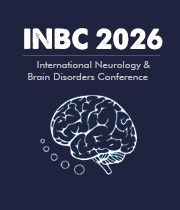Electroretinography
Electroretinography, or ERG, is a procedure used to measure electrical activity in the retina. This technique is often used to diagnose eye disorders such as macular degeneration, glaucoma, and retinal dystrophies. It is also used to monitor the efficacy of treatments for these conditions. ERGs measure the electrical activity of the retina when it is light-stimulated. A small electrode, usually contact lenses, is placed on the surface of the eye and is attached to an electroretinograph. Bright light or patterned stimuli are used to stimulate the eye, and the machine records the electrical responses of the eye's photoreceptors to the light. This data is then used to map the electrical activity of the inner retinal layers and determine the health of the patient's retina. In addition to diagnosing and monitoring eye diseases, ERGs can also be used to examine the effects of certain drugs on the retina. Some drugs, such as those used to treat glaucoma, may have an impact on the electrical activity of the retina. By using ERGs, doctors can assess the efficacy of these drugs and ensure that they are not causing further damage to the retina. In addition to its diagnostic capabilities, ERGs can also provide information that helps doctors decide how to treat certain vision conditions. For instance, some types of vision disorders can be treated with laser surgeries. ERGs can be used to pinpoint the precise areas of the retina that need to be treated in order to achieve the best results. ERGs are an important tool for diagnosing and monitoring eye diseases and diseases of the retina. In addition, ERGs can provide valuable information that helps doctors decide how best to treat different vision problems. For all these reasons, ERGs are an essential part of modern eye care.

Joe Sam Robinson
Mercer University, United States
Robert B Slocum
University of Kentucky HealthCare, United States
George Diaz
Memorial Healthcare Systems, United States
Daniel Curry
Texas Children’s Hospital, United States
Zhenhuan Liu
Guangzhou University Chinese Medicine, China
Kiran Ghotra
Lake Erie College of Osteopathic Medicine, United States




Title : Atypical presentation of Juvenile myoclonic epilepsy in a 16-year-old female: A Case Report
George Diaz, Memorial Healthcare Systems, United States
Title : What we don’t know about hydrocephalus and It’s management
Daniel Curry, Texas Children’s Hospital, United States
Title : Artificial intelligence-driven DWI and FLAIR for the detection of early stroke changes: A systematic review
Shari L Guerra, The Medical City, Philippines
Title : Mapping neuroplasticity in occupational therapy: Evidence-based interventions with measurable neural outcomes
Jessica Marchant, Texas Woman's University, United States
Title : Non-pharmacologic management of orthostatic hypotension in inpatient rehabilitation: A quality improvement initiative
Laura Steakin, Rehabilitation Institute at Sinai, United States
Title : Non-pharmacologic management of orthostatic hypotension in inpatient rehabilitation: A quality improvement initiative
Mackenzie Weber, Rehabilitation Institute at Sinai, United States